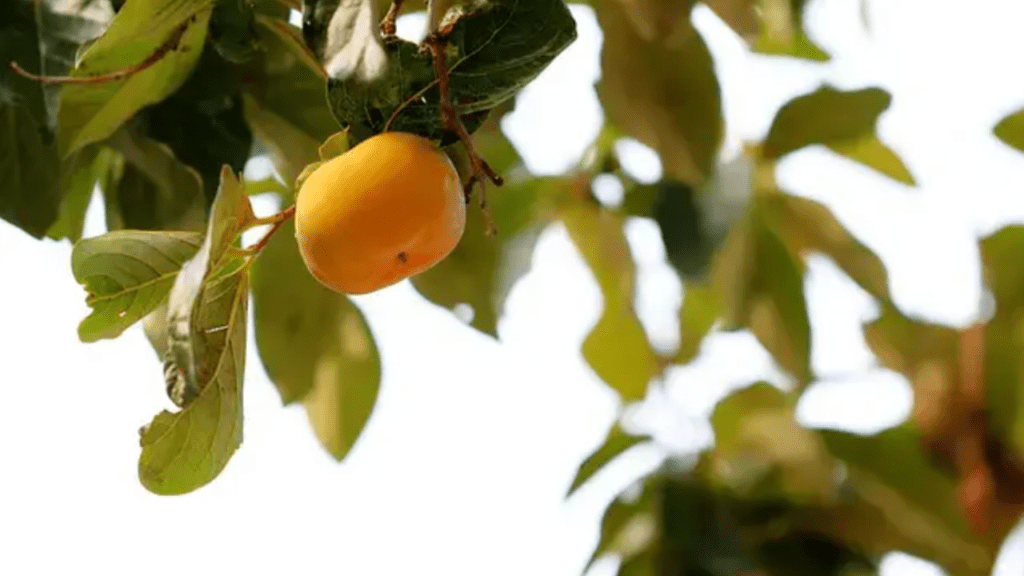
Step-by-Step Guide to Pruning Persimmon Trees for a Bountiful Harvest
Pruning persimmon trees is an essential task for ensuring a bountiful harvest. In this step-by-step guide, we will cover the best time to prune, the tools you’ll need, and provide detailed instructions for achieving optimal results. Whether you’re a beginner or an experienced gardener, this guide will help you maintain healthy and productive persimmon trees in your garden.
Pruning persimmon trees is crucial for their health and productivity. It helps to improve air circulation, light penetration, and overall tree structure. The best time to prune persimmon trees is in late winter or early spring before new growth begins. You will need a sharp pair of pruners, loppers, and a pruning saw to effectively prune your trees. Start by removing any dead, diseased, or damaged branches, followed by thinning out crowded or crossing branches. Make clean cuts at a slight angle just above a bud or lateral branch. Be sure to maintain an open center and a balanced tree shape. Proper pruning will promote better fruit production, reduce the risk of disease, and improve overall tree health. By following these steps, you can ensure a bountiful harvest of delicious persimmons from your trees.
Pruning persimmon trees is an important aspect of tree care that can have a significant impact on the health and productivity of the trees. Proper pruning helps to improve air circulation and light penetration, which is essential for the overall health of the tree. It also helps to maintain a balanced tree structure, which can prevent branches from becoming overcrowded and crossing each other.
The best time to prune persimmon trees is in late winter or early spring before new growth begins. During this time, the trees are dormant, making it easier to see the structure of the tree and make necessary cuts. To effectively prune your persimmon trees, you will need a sharp pair of pruners, loppers, and a pruning saw.
Start by removing any dead, diseased, or damaged branches to prevent the spread of disease and encourage new growth. Next, thin out crowded or crossing branches to maintain an open center and a balanced tree shape. Make clean cuts at a slight angle just above a bud or lateral branch to promote proper healing and growth.
Proper pruning of persimmon trees will promote better fruit production, reduce the risk of disease, and improve overall tree health. By following these steps, you can ensure a bountiful harvest of delicious persimmons from your trees.
Table of Contents
ToggleUnderstanding Persimmon Trees
Persimmon trees are a beautiful addition to any landscape and can provide delicious fruit for you to enjoy. When it comes to caring for persimmon trees, pruning is an important part of maintaining their health and promoting fruit production. The best time to prune persimmon trees is during the dormant season when the tree’s structure is more visible and it is easier to make necessary cuts. To effectively prune your persimmon trees, you will need a sharp pair of pruners, loppers, and a pruning saw. Start by removing any dead, diseased, or damaged branches to prevent the spread of disease and encourage new growth. Next, thin out crowded or crossing branches to maintain an open center and a balanced tree shape. Make clean cuts at a slight angle just above a bud or lateral branch to promote proper healing and growth. Proper pruning of persimmon trees will promote better fruit production, reduce the risk of disease, and improve overall tree health. By following these steps, you can ensure a bountiful harvest of delicious persimmons from your trees.
Overview of different types of persimmon trees (American vs. Asian).
There are two main types of persimmon trees: American and Asian. American persimmon trees (Diospyros virginiana) are native to the eastern United States and are known for their small, sweet fruits. They are hardy and adaptable to a wide range of soil types, making them a great option for home gardeners. Asian persimmon trees (Diospyros kaki) are native to China and Japan and are widely cultivated for their larger, crispier fruits. They come in two main varieties: astringent and non-astringent. Astringent varieties need to be fully ripe before they can be eaten, while non-astringent varieties can be eaten while still firm. Both types of persimmon trees can be grown in a variety of climates and are a popular choice for home orchards. By understanding the different types of persimmon trees, you can choose the best variety for your specific climate and growing conditions.
Growth habits and characteristics of persimmon trees.
Persimmon trees are known for their beautiful, glossy green foliage and striking orange fruits. They are small to medium-sized trees that can reach heights of 30-60 feet. The trees have a rounded or oval shape, and their leaves turn vibrant shades of yellow, orange, and red in the fall, adding to their ornamental appeal. These trees are also prized for their attractive bark, which is dark brown and deeply furrowed.
When it comes to their growth habits, persimmon trees are relatively low-maintenance. They prefer full sun and well-drained soil, but they can tolerate a wide range of soil types, including sandy, loamy, and clay soils. They are also resistant to pests and diseases, making them an excellent choice for home gardeners.
In terms of fruit production, persimmon trees are known for their prolific yield. The fruits are typically harvested in the fall and can be eaten fresh, dried, or used in cooking and baking. The American persimmon tree produces small, sweet fruits, while the Asian persimmon tree produces larger, crispy fruits that come in both astringent and non-astringent varieties.
Overall, persimmon trees are a wonderful addition to any home garden. They offer beautiful foliage, delicious fruits, and are relatively easy to care for, making them a popular choice for home orchards. By understanding their growth habits and characteristics, you can successfully cultivate and enjoy these delightful trees in your own backyard.
Lifespan and seasonal behavior.
Persimmon trees have a lifespan of around 75 years, making them a long-term addition to your garden. They prefer full sun and well-drained soil, but they can tolerate a wide range of soil types, including sandy, loamy, and clay soils. They are also resistant to pests and diseases, making them an excellent choice for home gardeners. In terms of fruit production, persimmon trees are known for their prolific yield. The fruits are typically harvested in the fall and can be eaten fresh, dried, or used in cooking and baking. The American persimmon tree produces small, sweet fruits, while the Asian persimmon tree produces larger, crispy fruits that come in both astringent and non-astringent varieties. Overall, persimmon trees are a wonderful addition to any home garden. They offer beautiful foliage, delicious fruits, and are relatively easy to care for, making them a popular choice for home orchards. By understanding their growth habits and characteristics, you can successfully cultivate and enjoy these delightful trees in your own backyard.
Benefits of Pruning Persimmon Trees
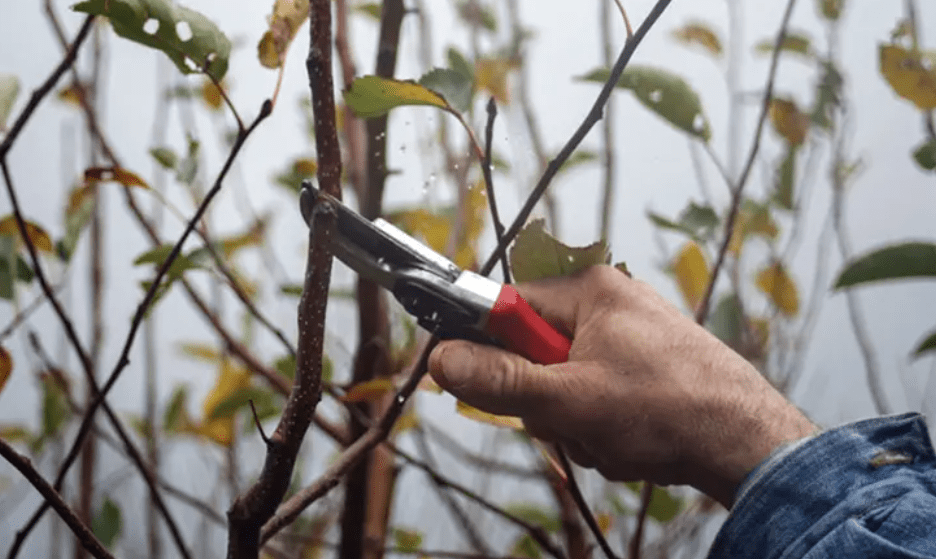
Improved air circulation and sunlight penetration.
Pruning persimmon trees is important for promoting improved air circulation and sunlight penetration. By removing dead or overcrowded branches, you allow better airflow throughout the tree, reducing the risk of diseases and promoting overall tree health. Additionally, pruning helps sunlight reach the inner parts of the tree, ensuring that all parts of the tree receive the necessary sunlight for optimal fruit production. With improved air circulation and sunlight penetration, persimmon trees are better able to thrive and produce a bountiful harvest of delicious fruits. Overall, pruning is a beneficial practice for maintaining the health and productivity of persimmon trees in your garden.
Enhanced fruit quality and size.
Pruning persimmon trees is important for promoting improved air circulation and sunlight penetration. By removing dead or overcrowded branches, you allow better airflow throughout the tree, reducing the risk of diseases and promoting overall tree health. Additionally, pruning helps sunlight reach the inner parts of the tree, ensuring that all parts of the tree receive the necessary sunlight for optimal fruit production. With improved air circulation and sunlight penetration, persimmon trees are better able to thrive and produce a bountiful harvest of delicious fruits. Overall, pruning is a beneficial practice for maintaining the health and productivity of persimmon trees in your garden. With proper pruning, you can expect enhanced fruit quality and size, resulting in a more abundant and flavorful harvest. So, remember to regularly prune your persimmon trees to ensure the best possible fruit production.
Prevention of disease and pest infestations.
Pruning persimmon trees is important for preventing disease and pest infestations. By removing dead or diseased branches, you can prevent the spread of disease throughout the tree. It also allows for better air circulation, which helps to reduce the risk of fungal infections and other diseases. Additionally, pruning helps to reduce the hiding spots for pests, making it easier to detect and control infestations. By regularly pruning your persimmon trees, you can maintain the overall health of the tree and prevent the spread of disease and pest infestations. Remember to always clean and sterilize your pruning tools to further prevent the spread of disease. With proper pruning, you can ensure that your persimmon trees remain healthy and productive.
Promotion of strong and healthy tree structure.
When it comes to the promotion of strong and healthy tree structure, regular pruning is key. Pruning persimmon trees is essential for maintaining the overall health and productivity of the tree. By removing dead or diseased branches, you can prevent disease and pest infestations from spreading throughout the tree. Additionally, pruning allows for better air circulation, reducing the risk of fungal infections and other diseases. It also helps to promote strong and healthy tree structure, ensuring that the tree can support the weight of its fruit and withstand environmental pressures. Overall, regular pruning of persimmon trees is crucial for promoting strong and healthy tree structure and maximizing fruit production.
Tools and Equipment for Pruning Persimmon Trees
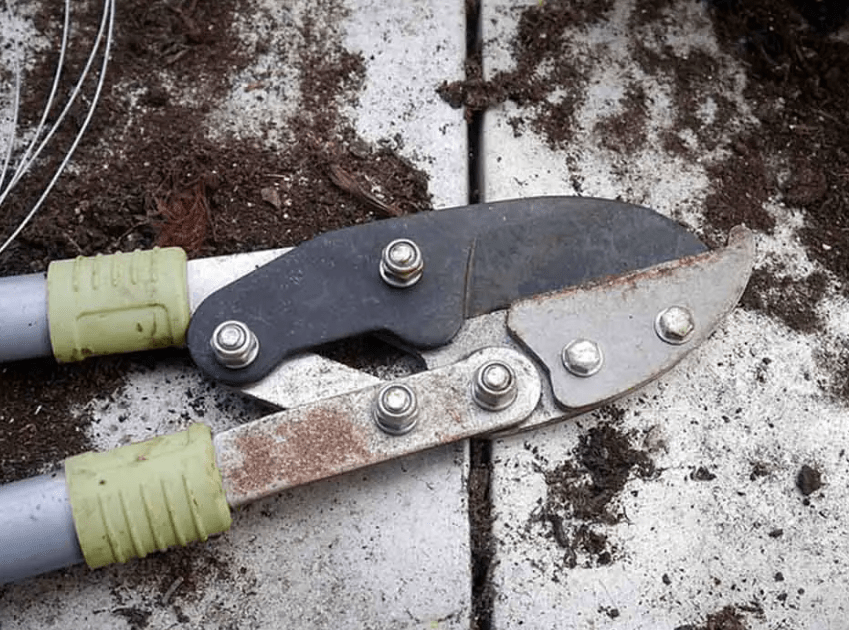
Essential pruning tools: pruners, loppers, pruning saws.
Pruning persimmon trees is essential for maintaining their overall health and productivity. When it comes to promoting strong and healthy tree structure, regular pruning is key. By removing dead or diseased branches, you can prevent the spread of disease and pest infestations throughout the tree. Additionally, pruning allows for better air circulation, reducing the risk of fungal infections and other diseases. It also helps to promote strong and healthy tree structure, ensuring that the tree can support the weight of its fruit and withstand environmental pressures. To properly prune persimmon trees, essential tools such as pruners, loppers, and pruning saws are necessary. When using these tools, it’s important to always clean and sterilize them to prevent the spread of disease. By regularly pruning your persimmon trees, you can help ensure their health and productivity for years to come.
Safety gear: gloves, eye protection.
When pruning persimmon trees, it is essential to prioritize safety by using the proper safety gear. Gloves are important for protecting your hands from thorns, sharp branches, and other potential hazards. Additionally, eye protection is crucial for preventing eye injuries from flying debris or branches. It’s important to always wear safety gear when working with pruning tools to reduce the risk of accidents and injuries. By prioritizing safety, you can ensure a safe and productive pruning process while maintaining the health and productivity of your persimmon trees.
Maintenance of tools for effective pruning.
When it comes to pruning your persimmon trees, having the right tools is essential for effective maintenance. Tools such as pruners, loppers, and pruning saws are necessary for properly shaping and trimming your trees. However, it’s important to always clean and sterilize your tools before and after each use to prevent the spread of disease between trees. Regular maintenance of your pruning tools will also help them to perform at their best, ensuring a clean and precise cut each time.
In addition to the proper tools, safety gear is also crucial when pruning persimmon trees. Wearing gloves will protect your hands from thorns, sharp branches, and other potential hazards. Eye protection is also important for preventing eye injuries from flying debris or branches. By prioritizing safety and using the proper gear, you can reduce the risk of accidents and injuries while maintaining the health and productivity of your persimmon trees.
In conclusion, maintaining your pruning tools and using the proper safety gear are essential for effective and safe pruning of your persimmon trees. By staying proactive in the maintenance of your tools and prioritizing safety, you can ensure the health and productivity of your trees for years to come.
Step-by-Step Guide to Pruning Persimmon Trees
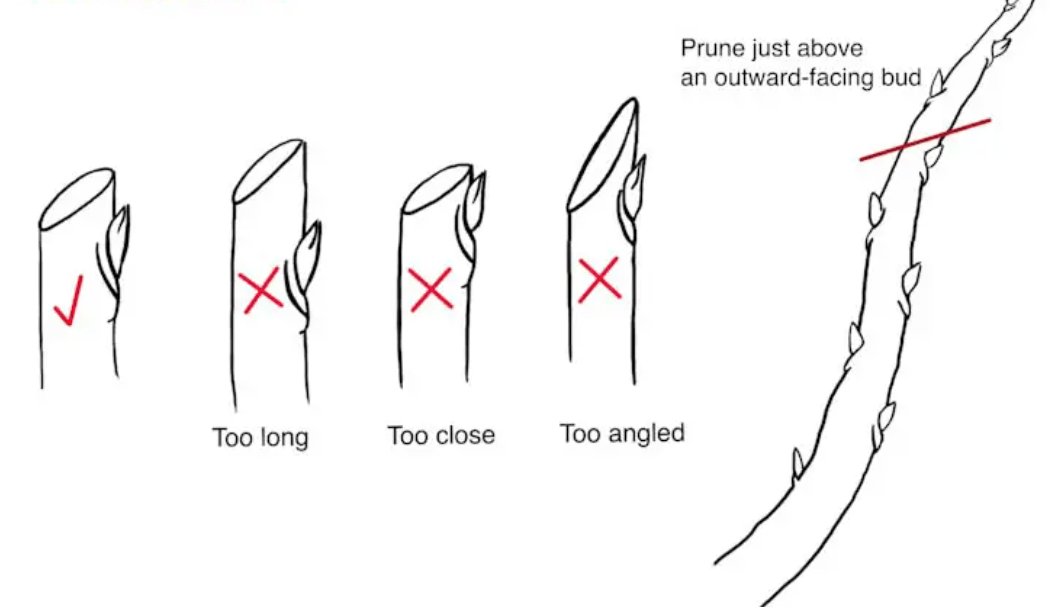
Preparing the tree: removing dead or diseased wood.
Pruning persimmon trees is an important part of maintaining their health and productivity. Before you start pruning, it’s important to prepare the tree by removing any dead or diseased wood. This will help to prevent the spread of disease and promote the overall health of the tree. Use clean and sterilized pruning tools to make clean cuts and avoid damaging the tree. Regular maintenance of your pruning tools will also help them to perform at their best, ensuring a clean and precise cut each time. In addition to the proper tools, safety gear is also crucial when pruning persimmon trees. Wearing gloves will protect your hands from thorns, sharp branches, and other potential hazards. Eye protection is also important for preventing eye injuries from flying debris or branches. By prioritizing safety and using the proper gear, you can reduce the risk of accidents and injuries while maintaining the health and productivity of your persimmon trees. In conclusion, maintaining your pruning tools and using the proper safety gear are essential for effective and safe pruning of your persimmon trees. By staying proactive in the maintenance of your tools and prioritizing safety, you can ensure the health and productivity of your trees for years to come.
Thinning cuts: removing overcrowded branches.
Thinning cuts are an important part of tree maintenance, especially for persimmon trees. These cuts involve removing overcrowded branches to improve the overall health and productivity of the tree. It’s important to use clean and sterilized pruning tools to make precise and clean cuts without damaging the tree. Regular maintenance of your pruning tools will also ensure that they perform at their best, resulting in a clean and precise cut each time. Safety gear is also crucial when pruning persimmon trees. Wearing gloves will protect your hands from thorns, sharp branches, and other potential hazards. Eye protection is also important for preventing eye injuries from flying debris or branches. By prioritizing safety and using the proper gear, you can reduce the risk of accidents and injuries while maintaining the health and productivity of your persimmon trees. Overall, maintaining your pruning tools and using the proper safety gear are essential for effective and safe pruning of your persimmon trees. By staying proactive in the maintenance of your tools and prioritizing safety, you can ensure the health and productivity of your trees for years to come.
Heading cuts: controlling size and shape.
When it comes to pruning and making heading cuts for controlling the size and shape of your trees, it’s important to use clean and sterilized pruning tools. This will ensure precise and clean cuts without damaging the tree. Regular maintenance of your pruning tools is also crucial to ensure they perform at their best, resulting in a clean and precise cut each time. Safety gear is also essential when pruning trees. Wearing gloves will protect your hands from thorns, sharp branches, and other potential hazards. Eye protection is also important for preventing eye injuries from flying debris or branches. By prioritizing safety and using the proper gear, you can reduce the risk of accidents and injuries while maintaining the health and productivity of your trees. Overall, maintaining your pruning tools and using the proper safety gear are essential for effective and safe pruning. By staying proactive in the maintenance of your tools and prioritizing safety, you can ensure the health and productivity of your trees for years to come.
Specific techniques for young vs. mature trees.
When it comes to pruning, the techniques for young and mature trees can vary. For young trees, it’s important to focus on shaping and training the tree to develop a strong and healthy structure. This includes removing any dead or damaged branches, as well as thinning out excess growth to promote good air circulation and light penetration. For mature trees, the focus is more on maintenance and managing the tree’s size and shape. This may include removing dead or diseased branches, as well as thinning out the canopy to reduce the risk of storm damage and improve the overall health of the tree. When pruning mature trees, it’s important to be mindful of not removing too much foliage, as this can stress the tree and make it more susceptible to disease and pests. Overall, the specific techniques for pruning young and mature trees should be tailored to the individual tree’s needs and growth stage. It’s important to approach pruning with care and consideration for the tree’s overall health and well-being.
Common Pruning Mistakes to Avoid
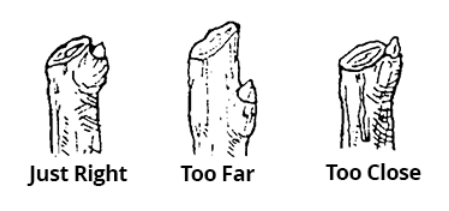
Pruning trees is an important part of maintaining their health and appearance. However, there are some common mistakes that people make when pruning trees. One mistake is over-pruning, which can stress the tree and make it more susceptible to disease and pests. Another mistake is not considering the tree’s individual needs and growth stage when pruning. It’s important to tailor the pruning techniques to the specific tree to ensure its overall health and well-being. Additionally, not removing dead or damaged branches can hinder the tree’s growth and make it more vulnerable to storm damage. It’s important to focus on shaping and training young trees to develop a strong and healthy structure, while for mature trees, the focus is more on maintenance and managing the tree’s size and shape. Overall, it’s important to approach pruning with care and consideration for the tree’s health and avoid these common mistakes to ensure the best results.
In conclusion, pruning persimmon trees is essential for promoting healthy growth and a bountiful harvest. By following the step-by-step guide provided in this post, you can ensure that your trees are properly pruned at the right time and with the right tools. This will ultimately lead to a successful and productive harvest of delicious persimmons. Happy pruning!
Frequently asked questions And Answer
The best time to prune persimmon trees is during the dormant season, which is typically in late winter or early spring before new growth begins.
Start by removing any dead, diseased, or crossing branches. Then, thin out the canopy to allow for better air circulation and light penetration. Finally, shape the tree by pruning to encourage a strong structure and productive fruiting.
You will need a pair of sharp pruning shears for smaller branches, loppers for thicker branches, and a pruning saw for larger limbs.
It’s important not to remove more than 25% of the tree’s canopy in a single pruning session to avoid stressing the tree. Always aim for selective and moderate pruning rather than excessive cutting.
Yes, persimmon trees are best pruned using the open-center or modified central leader training system to encourage a strong and balanced structure for fruit production.
Yes, properly pruning your persimmon tree can help stimulate new growth and improve fruit quality and yield. It also allows for better light and air circulation, which is essential for fruit development.
You can either compost the pruned branches and trimmings or dispose of them in your yard waste collection if composting is not an option.
Persimmon trees should be pruned annually during the dormant season to maintain their health, shape, and productivity.
